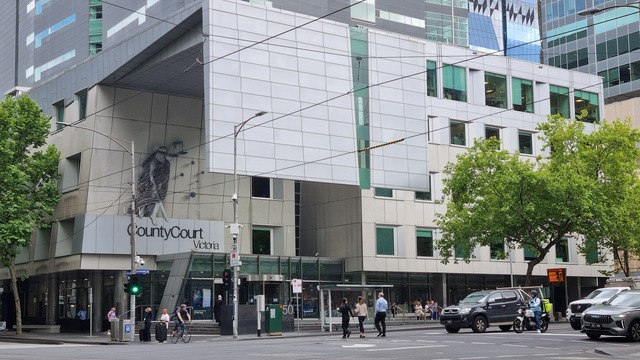High-speed broadband could start a renaissance for manufacturing in Melbourne’s east and south-east, with the prospect of more jobs. The big query is how soon the fibre-optic network will be complete, Cameron Lucadou-Wells reports.
High-speed broadband is not just a boon for online gamers or those consuming TV and movie downloads. There’s a productive edge to this business.
As Fujitsu Australia chief technical officer Craig Baty puts it, businesses risk being left in a Third World vacuum without the $36 billion National Broadband Network.
“The NBN will make it easier to play games, which is what everyone thinks, but it will enhance things that Australia has a good reputation in, like biotechnology, biometrics, developing software, distance education.
“But if the broadband is slow, it takes a long time to upload and send big complex files. It makes it harder for other countries to access our stuff.’’
For Fujitsu Australia there’s no doubt the NBN — which replaces copper wire with fibre-optic broadband that’s up to 10 times faster — is good for business. It recently invested in a $60 million upgrade at its Noble Park data centre, a nod to an expected rise in demand for cloud computing.
“We didn’t do the upgrade just because of the NBN, but it will help us,’’ Mr Baty says.
He says people should get over the estimated cost – expected to be a mix of private investment and $27.5 billion of federal funding – and look at the benefits.
“Ubiquitous high-speed broadband is needed. Otherwise we’ll be a Third World country left out of the global economy.
“Stop thinking we can forever rely on agriculture and mining. If we want to have a clever country — if we want to have more jobs for people to use their mind and not lose our brains overseas, this is what we have to do.’’
Much has been made of the decline in manufacturing in Australia. Traditionally, the sector has been Victoria’s largest full-time employer but marginally more people are now employed in retail. According to the ABS labour force statistics, about 264,000 Victorians had full-time manufacturing jobs in February this year — nearly 50,000 less than in February 1997.
South East Melbourne Innovation Precinct chairwoman Kerry Hayes is urging an early rollout of the technology so the south-east and east Melbourne manufacturing hubs could lead a “renaissance of Australian manufacturing’’.
Businesses say the service will bring them up to speed internationally. It will improve teleconferencing with clients and open up faster cloud services to store and access huge technical files on online servers.
“It is already the nation’s strongest research and industrial complex,’’ Ms Hayes says.
“Many of the businesses in the south-east of Melbourne are ‘technology rich’ and need to transmit large amounts of data to suppliers, customers or industry partners.’’
Andres Quijano, technical support manager at Knoxfield environmental monitoring service Ecotech, says high-speed broadband would allow the company to expand its network of 300 remote monitors in Australia and New Zealand.
The data, which might show levels of particulate matter and carbon dioxide in the air, is downloaded to a central database. The NBN will take this to “the next level”, giving the possibility of controlling instruments and seeing live broadcasts of hundreds of remote sites from a central office.
“We couldn’t deal with data from 300 stations at once. The NBN with its bigger bandwidth basically gives us room for more expansion,’’ Dr Quijano says.
Scoresby bio-manufacturer MiniFAB creates world-class, simple-to-use medical diagnostics based on plastic technologies.
MiniFAB chief executive Erol Harvey says his company would heavily rely on better digital communication to overseas clients, in which he can share real-time videos of what his researchers see under a microscope.
Professor Paul Bonnington, director of Monash University’s e-Research Centre, says high-speed broadband has transformed research at the university. Already researchers are using high-capacity fibre optics to link their computers to super-computers that can collate and analyse huge amounts of data.
The same will happen in the high-end and niche manufacturing sectors, Professor Bonnington says. ‘‘By linking to a super-computer we can crash-test a side beam on a car for thousands of materials and thousands of scenarios.
‘‘Rather than make the beam 10 different ways or test it in 10 different cars, we could get a computer to simulate how that would perform and run it a thousand times without leaving the desk.’’
Despite the cries for an imminent rollout, the NBN has no specific timetable to install its cables in the precinct as part of its 10-year rollout plan.
An NBN spokeswoman says the company is under an ‘‘obligation to conduct the rollout as efficiently and cost-effectively as possible’’.
Priority is being given to sites with available Telstra infrastructure and growth corridors likely to contain “high numbers of greenfields sites’’.
According to the NBN website as of last week, rollout works will start in some of the hub suburbs including Dandenong, Mulgrave and Notting Hill between June 2014 and June 2015.
The start will likely predate the next federal election, due no later than 2014.
If elected, a Coalition government has indicated it would halt the rollout in favour of a cheaper fibre-to-the-node broadband. This model would mean fibre-optic connections would be built to neighbourhood nodes, or local distribution hubs. Homes and businesses would connect with existing copper wire to the nodes.
Professor Bonnington says switching to a cheaper alternative such as fibre-to-the-node would change the way the broadband network could be used.
‘‘Fibre-to-the-home opens up different applications than fibre-to-the-node. A lot of focus is on bandwidth but it’s actually the quality of the service which is important.’’
Isaacs Labor MP Mark Dreyfus says ripping up the NBN would ‘‘saddle businesses, hospitals and our schools with last-century technology’’.
Opposition communications spokesman Malcolm Turnbull says broadband upgrades should prioritise those areas where current service is the poorest.
‘‘The decade-long timeframe of the rollout can be significantly reduced by using a mix of technologies and utilising our current infrastructure.”
Professor Bonnington says we haven’t yet imagined the full potential of what high-speed broadband can provide.
‘‘It’s like any game-changing technology. It can have a profound impact on society — it’s not until after it happens where we see the full impact.’’







